19 Mar 2020
Statistics
Domestic undergraduate applications and offers at semester 1 closing 2020
The Universities Admissions Centre (UAC) processed domestic undergraduate applications for 27 institutions in 2019-20, mainly in NSW and the ACT. Applications for tertiary study in 2019–20 opened on Wednesday 3 April 2019 and semester 1 applications closed at midnight on Friday 7 February 2020.
Note: This admissions cycle was longer than previous cycles (opening four months earlier) and extending to 10 months to accommodate the implementation of flexible admissions. Therefore these statistics do not compare directly to published statistics from previous admissions periods.
UAC received 76,003 domestic applications for undergraduate study in the 2019–20 admissions year, 3,945 (5.5%) more than this time last year. However, it is worth noting that the previous admissions cycle (2018–19) was shortened to around 6 months due to changes in UAC processes. Thus, some of the findings seen in this statistical report need to be interpreted in context.
A total of 99,394 offers were made to these applicants.*
*Note: There are more offers made than there are applicants because, even though applicants can only receive one offer in each offer round, they can receive an offer in more than one round. Read more at Offers FAQ.
Applications and offers by applicant type
Applicants are divided into four types: NSW Year 12, ACT Year 12, interstate and International Baccalaureate Year 12, and non-Year 12.
For the Year 12 groups (NSW, ACT, Interstate and IB), the numbers dropped slightly compared with last year.
In contrast, the recent downward trend in the non-Year 12 applicants has been halted, with nearly 4,000 more non-Year 12 applicants applying in this cycle compared with last year. However, as mentioned above, the 2018–19 cycle was shorter, and it was likely that non-Year 12s who applied for 2019 semester 2 courses have been included in this year’s count. This could explain the increase in applications by non-Year 12s.
Applications by applicant type
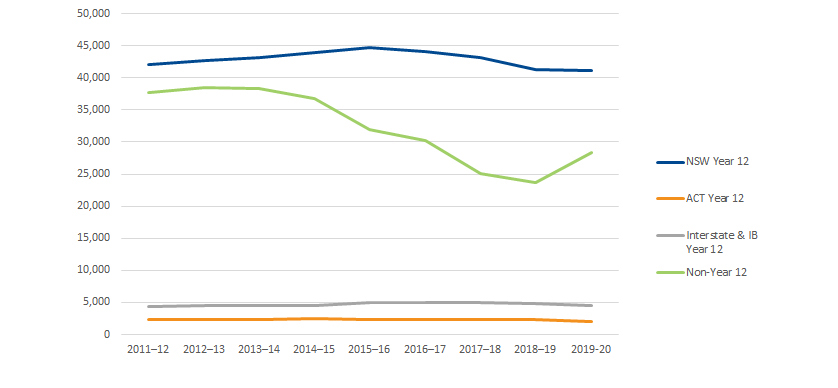
The following chart shows total offers by applicant type up until the release of final semester 1 offers (Saturday 7 March in 2020) for the last nine admissions periods.
Offers by applicant type
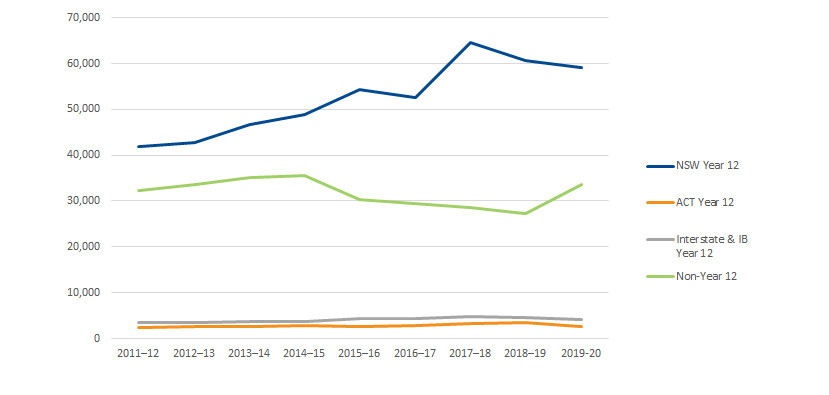
Gender analysis
The gender split of applicants was similar to the previous year: 56 per cent of Year 12 applicants were female, while 57 per cent of non-Year 12 applicants were female.
Age analysis
Almost all Year 12 applicants in 2019-20 were 19 years old and under (99.7%). Around three-quarters (74.4%) of non-Year 12 applicants were 24 years old and under. The breakdown by age group for non-Year 12 applicants is shown in the following chart.
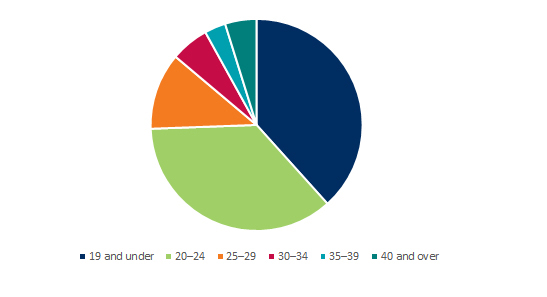
First preference analysis
Domestic undergraduate applicants can choose up to five course preferences. Their first preference is the course they would most like to study.
First preference by field of study and applicant type
The top five fields of study listed as first preferences by NSW and ACT Year 12 applicants were almost identical. Both groups had most first preferences in Society & Culture, followed by Health.
For non-Year 12 and interstate and International Baccalaureate Year 12 applicants, most first preferences were in Health, followed by Society & Culture.
Overall, Health has taken the top spot as the favoured field of study, with 26 per cent of UAC’s 2019–20 applicants listing it as their first preference. Society & Culture received 22 per cent of first preferences across all applicant types.
First preferences by field of study
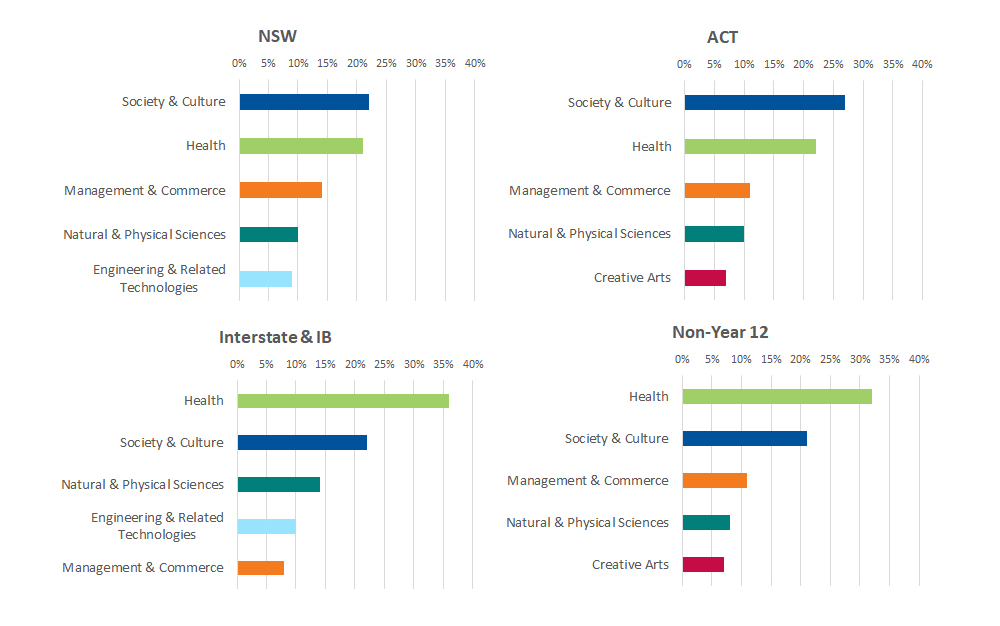
Offers by field of study
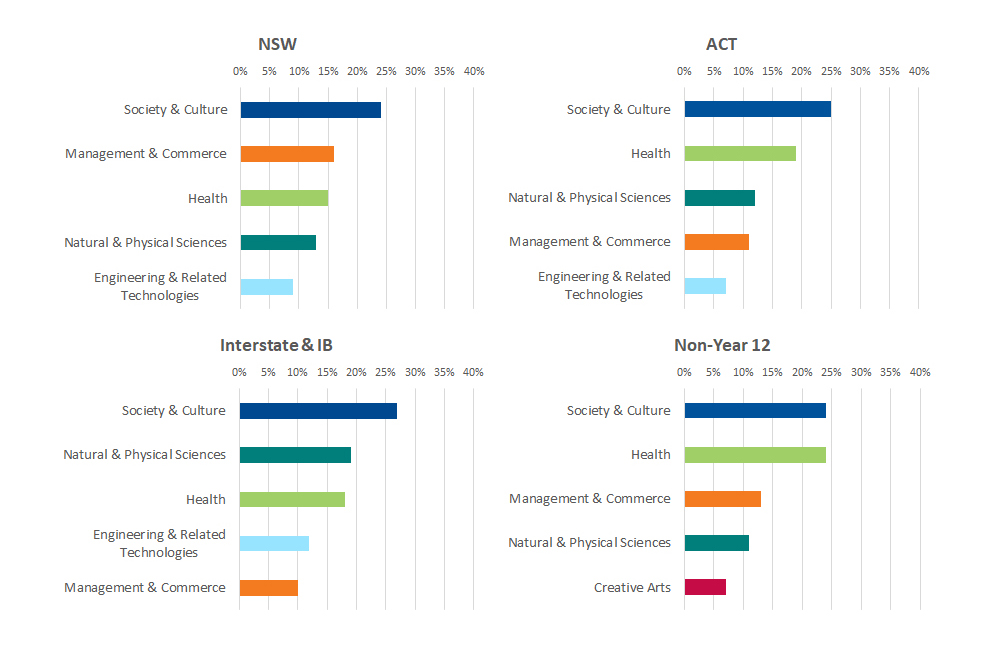
First preference by field of study and gender
While both females and males had most first preference courses in Health, the spread of first preference courses across fields of study was more even for males than for females.
Over half of female applicants listed their first preference course in either Health (32%) or Society & Culture (25%). In contrast, popular fields of study for males included Health (19%), Management & Commerce (16%), Society & Culture (17%), and Engineering & Related Technologies (14%).
Compared with males, a smaller proportion of females had first preference courses in Engineering & Related Technologies, Management & Commerce, and Information Technology.
Field of study of first-preferences course by gender: 2019-20
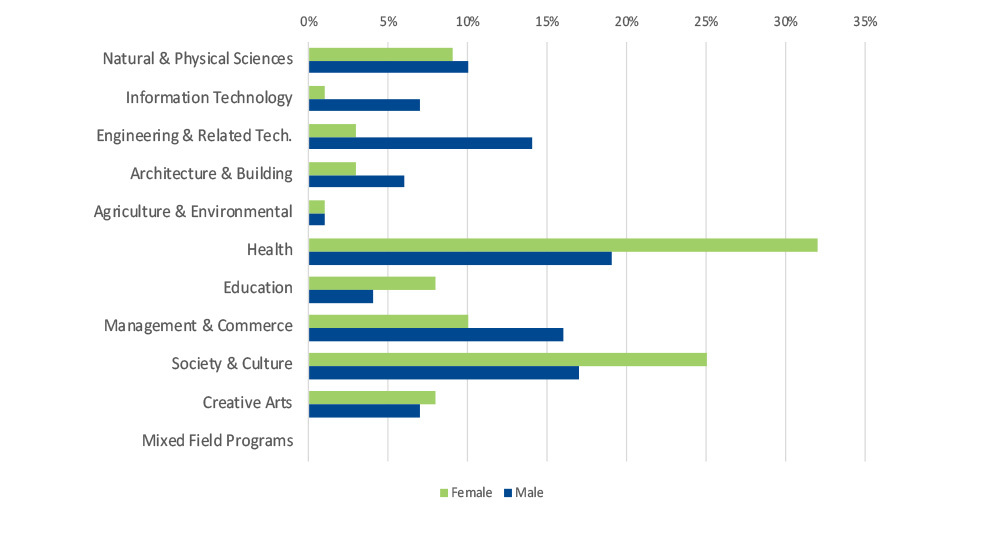
Visit UAC’s statistics pages for more application and offer data.